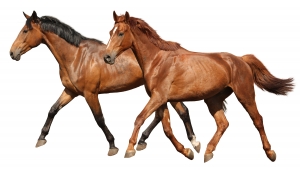Helping Readers Organize Their Perceptiions
Helping readers organize their perceptions of your industry and of the services and products you offer is one of the core functions of blog marketing. An article in Forbes, “5 Cybersecurity Strategies for a Riskier World“, is an excellent model of how to present information in a well-organized, easy-to-digest format. For each imperative, a statistic is presented, followed by a piece of advice.
- (Imperative) Balance innovation and security.
(Statistic) 41% of executives say cyber risk initiatives at their organizations have not kept pace with digital transformation.
(Advice) Don’t invest in cleanup for legacy systems – bake in security with new efforts.
2. (Imperative) Inventory your highest risks.
(Statistic) 4 in 10 organizations now take a risk-based approach to cybersecurity.
(Advice) Get your technical teams, partners, and suppliers on the same page.
3. (Imperative) Safeguard remote work.
(Statistic) 67% of business-impacting cyber attacks target remote workers.
(Advice) Offer security awareness training for employees and their families, paying for the use of family password stories and antivirus protection for home devices.
In marketing a business or practice, organizing relevant and useful information in a structured format can be very useful to readers. Bullet points and numbered lists help readers’ eyes move quickly through the material. And, when the blog content “walks” readers through logical steps to a conclusion, that can increase the likelihood of them staying around to read all your key points.
Statistics can actually serve as myth-busters; if there’s some false impression people seem to have relating to your industry, or to a product or service you provide, you can bring in statistics to show how things really are. Statistics can also serve to demonstrate the extent of a problem (which is precisely how they are used in the Forbes article). Once readers realize the problem, the door is open for you to show how you help solve that very type of problem for your customers!
In terms of offering advice, I’ve often mused that, out of all the possible advertising and marketing tactics a business or professional practice might use, blogging’s way ahead of the pack because it attracts customers who want to be sold. In fact, it’s the close match between the type of advice the searcher wants and what you know about that accounts for your meeting them in the first place!
It’s important that the entire format of the Forbes article is built around numbers, both in the “listicle” format and in the statistics. . In an analysis by HubSpot of their own blog posts to see which titles had performed the best in terms of search results, the top eight each included a number. In blogging for business, numbers are a great way to be specific about your accomplishments. They also show that you pay attention to benchmarks and concentrate on setting and meeting goals.
Organizing the material offered in your blog post helps readers organize their perceptions.






Follow us online!